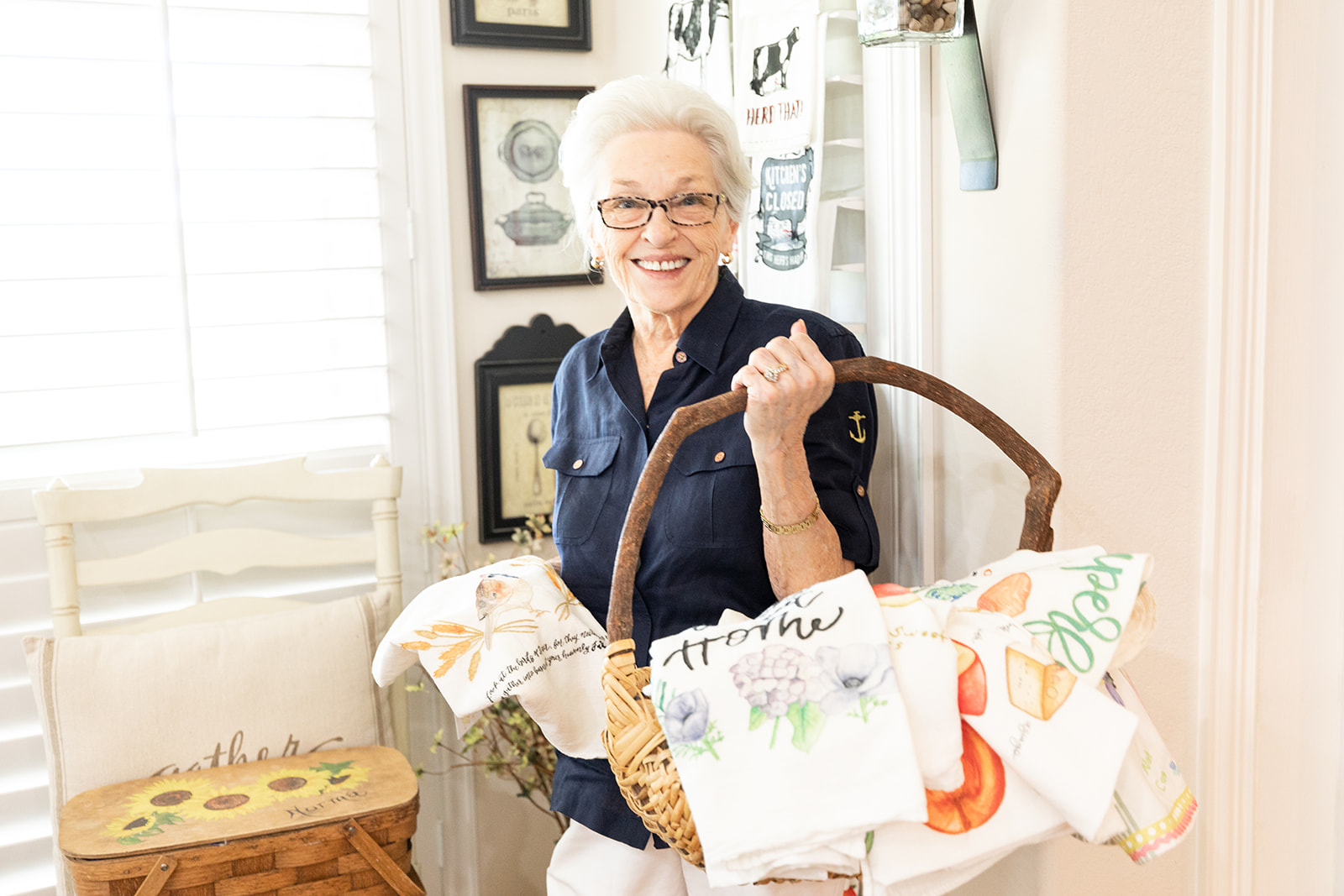Hand embroidery seems to be a lost art. If you are unfamiliar, embroidery is decorating textiles with a needle and thread. Machines can mass produce embellished textiles quickly and inexpensively. However, there’s something to be said for hand stitched embroidery.
I think it is important to maintain skills and traditions that are passed down from one generation to the next. I learned to embroider under the direction of my grandmother who learned it from her grandmother. One day soon, I will teach my daughter how to embroider.

Embroidered Tea Towels
One of my grandmother’s favorite hobbies is collecting and embroidering graphic printed tea towels, like the ones from my shop. It’s a fulfilling past time that allows her to personalize her decor. She displays many of them in her breakfast nook.

Grandma’s Tips for Embroidery
Tip 1: Always sew under natural light. Artificial lights, like lamps, do not compare to sunlight. Natural light is best for choosing thread colors and seeing small details.
Tip 2: Use a lightweight needle with a large eye. It is easier to thread a needle with a large eye.
Tip 3: Check the back of the fabric that you are sewing often. This will prevent the thread from tangling or accidentally sewing your fabric to your clothing!
Tip 4: Don’t use embroidery hoops. Instead, feel for the needle with non-dominant hand and pull the fabric down when stitching.
Tip 5: Tie a long ribbon to scissors. This will prevent them from getting lost.

Types of Embroidery
The Lazy Daisy

The lazy daisy stitch looks like a flower petal. First, push the needle and thread through the bottom of the fabric. Next, go back where you came from with the needle. However, do not pull the thread all the way through. Leave a little bit of a loop of the thread on the top of the fabric.
Depending on the size of the daisy petal you are creating, bring the needle back up through the bottom of the fabric at the top of the petal. For instance, thin petals are made with long stitches pulled tight. So, round petals are made with shorter stitches left loose.
Next, catch the loop of the thread, from the previous step, with the needle and secure it by pulling the thread and stitching over top of it. Then, come back up through the initial starting point to create the next petal. Repeat to form 5-7 petals on each flower.
French Knots

French knots create a beautiful texture when grouped together in embroidery design. First, bring the needle and thread up from the bottom of the fabric. Before putting the needle back through right where you started, wrap the thread around the needle 2-3 times.
The trick is to point the needle away from the starting point when wrapping. Then, turn the needle back through. In addition, it helps to hold the thread tight with the thumb of your other hand while wrapping.
Satin Stitch

The satin stitch is typically sewn with fewer strands of embroidery thread. For instance, embroidery floss comes with six strands of thread. Therefore, you can separate the floss to make lines thinner before threading. The number of strands that you use will determine the thickness of the satin stitch.
To begin, start with the needle and thread under the fabric. Next, simply go out with the needle to the perimeter of the shape of your design. Then, pull the needle through the bottom. Come back up right next to where you started and go back out right next to the last stitch. For instance, create long stitches side by side to fill in the shape of the design.
Cross Stitch

A cross stitch is just a stitch in the shape of a cross. First, start by coming up with the threaded needle through the bottom of the fabric. Imagine the shape of a square.
The first stitch is the bottom left corner of the square. Next, go back in the fabric in the top right of that imaginary square and return underneath in the bottom right corner. Lastly, finish the stitch by crossing over the top and taking the needle into the top left corner.
Follow me on Instagram at @FromSusie to watch all the shenanigans with my grandmother and I. But first, shop my collection of cotton flour sack tea towels at From: Susie! Each tea towel features a custom watercolor design by artist Katie Curry. Thank you for stopping by the blog today.








